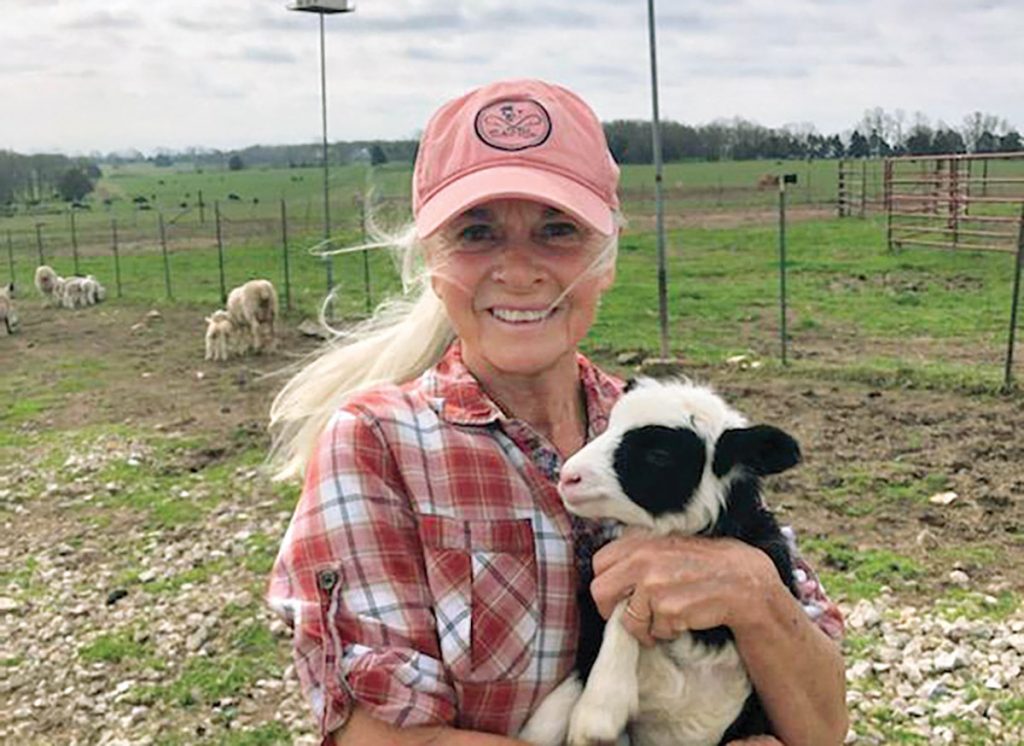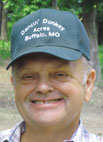
Jane Glendenning returns to her love of sheep and fiber
Back when Jane Glendenning and her husband Jack were just starting life together, they had cattle and sheep. In the 1980s, Jane kept 60 head of mixed breed wool sheep while raising their sons, Jack and Jason, in rural Laclede County, outside Lebanon, Mo.
Friends at Eldridge, Mo., made her a spinning wheel and for nearly a decade, she enjoyed working in the fiber arts.
“And then I went to work for the post office as a rural mail carrier for 25 years,” she explained. “Jack worked for the Missouri Department of Conservation and ran the cattle, but there just wasn’t time for the sheep anymore.”
After retiring from the post office, Jane has reconnected with her past and is once again, enjoying life in fiber, which for her is also life with sheep.
“I found the Whimsy Fiber Art Guild, a group of people who were spinning and teaching spinning to others,” Jane said. “It re-kindled an old interest. I’ve now acquired three spinning wheels and we love to get together and talk about fibers, colors and spinning wheels.”
And once again, she is raising mixed breed sheep, including Shetlands, Border Leicester and Blue-faced Leicester.
“Some like the Shetlands, a primitive breed, and have not been bred up with other breeds,” Jane said.
Others, like the various Leicester breeds, trace back to England and colonial America. George Washington was so taken with the various types, he mentioned them in several of his letters written more than a decade after the American Revolution.
“They have such beautiful soft wool and I like mixing their wool,” Jane said. “I have multi-colored sheep, including black, gray, silver and white. I like to stay with the earth tones, the natural colors. They run from coarse to very fine, and of course, it varies depending on what you want to do with it. I like to say, I take the wool from the sheep to my spinning wheel to my knitting needles. It’s pretty labor-intensive, but I enjoy it. When people complain that wool makes them itch, that is often from commercial products that have been added to the wool somewhere along the line. What I have is completely natural with no chemical agents added.”
Jane runs her sheep on approximately 60 acres of the family’s 300-acre farm, where Jack continues to raise 60 cow/calf pairs of Limousin and Limousin-cross cattle.
In March, Jane sponsored a field day at the Glendenning family farm as J Bar J Woolies, which includes wool, lambs and mixed bred sheep, she invited many of the others she’s met over the years who are interested in the fiber arts.
“Some, like me, stay with the natural colors and others, like to dye the wool to include all the colors. We had shearers here from Texas that day so the girls could pick out their fleeces while they were here,” she said.
“Wool was once a valuable, marketable product in the agricultural community, but not anymore. Wool doesn’t bring anything anymore unless you are in the fiber business, working with crafts. In some places, like in the Southwest, people still use wool for rugmaking, in a much bigger way. I just enjoy working with it and of course, working with the sheep and the lambs.”
She has about 18 ewes and has 21 lambs. Jane pays close attention to the health of her animals and vaccinates twice a year with CDT, an eight-way vaccine. She also de-worms seasonally.
“Overall, I have less trouble with parasites in the sheep than I did when I had goats in the past,” she explained. “The barber pole worm is the one you really have to watch out for. It’s a blood-sucking parasite so you check their FAMANCHA score, which is determined by eyelid color. They need to be pink. If they have turned pale or white, it indicates severe anemia and you can lose that animal in less than 24 hours.”
Sheep are supplmented with a lamb and ewe feed from Purina.
“I also separate the new mothers into a lambing jug, which is just a separate pen but it’s especially important for the ewes with triplets. I’ve seen them get confused and reject that third lamb if left on their own immediately out in the field. It’s just for the first couple of days until they get to know who’s who.”
After 53 years on the farm, Jane Glendenning is in a very real sense, right back where she started and enjoying every minute of it.







